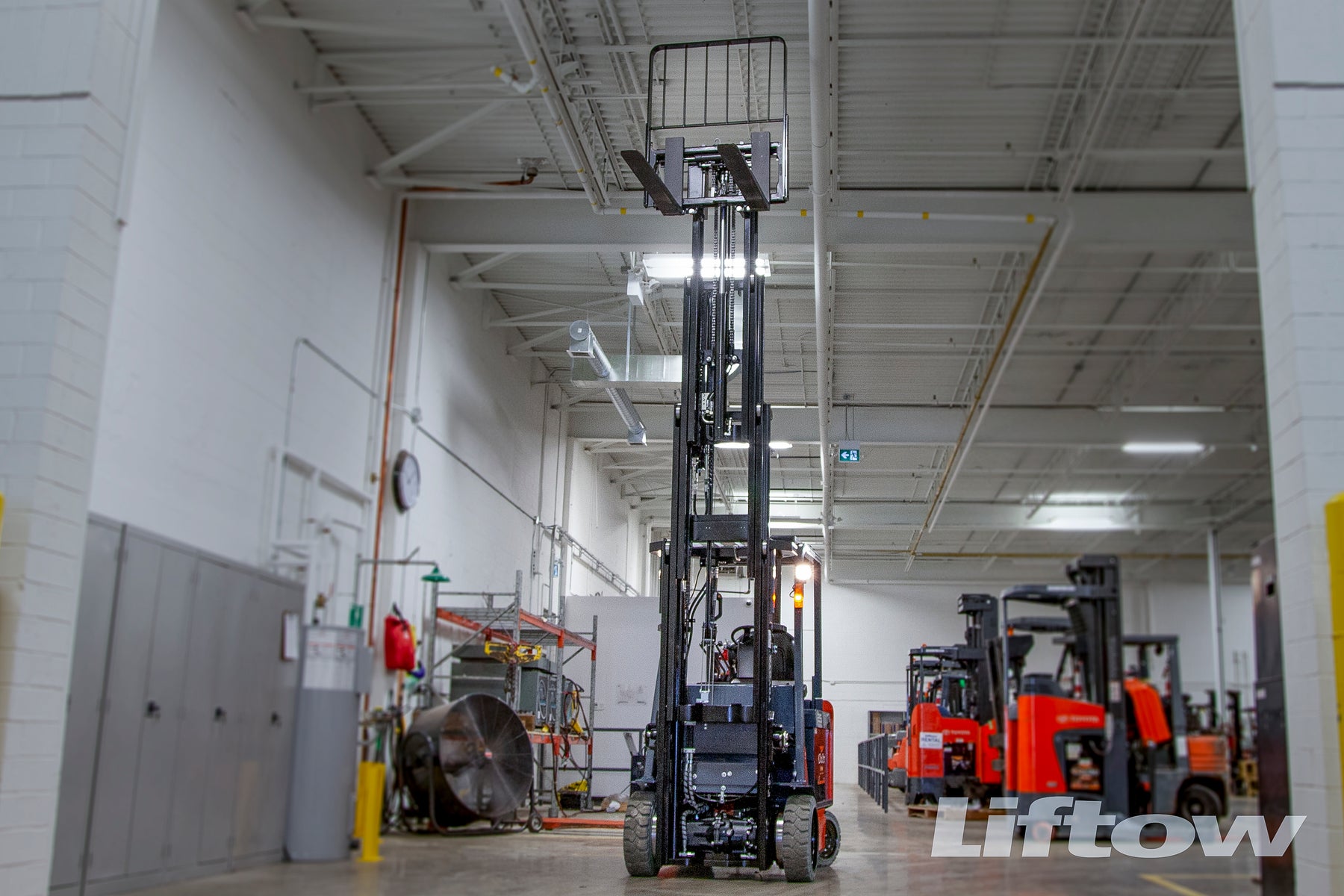
How do Forklifts Maintain Balance?
When you witness a state-of-the-art forklift in action, especially one with a high reach and broad lifting capacity, you might feel like you’re witnessing a violation of the laws of physics. You might wonder what keeps the front end of the truck and the forks from toppling forward, especially when the load is heavy, the extension is above the height of the truck, and the truck seems to have no visible anchors connecting it to the ground. How does it work?
You may also ask a similar set of questions while watching a loaded lift truck maintain stability around a tight corner or while moving up or down an incline. Is it magic?
Not really. Lift trucks—even the most high-tech models—rely on simple concepts to stay upright while loaded and in motion. And most of the mechanisms that provide this stability are positioned in the base.
A Shifting Center of Gravity
In an ordinary truck with no mast or lifting gear, the center of gravity typically lies in the center of the base of the chassis. But since a lift truck is designed to weigh more in the front when loaded, its center of gravity is positioned to accommodate this difference. And in modern lift trucks, the center of gravity can be changed—moved backward or forward—depending on the condition of the load.
Systems of Active Stability
In new model Toyota lift trucks, a System of Active Stability (or SAS) allows sensors in the mast and base of the truck to assess the load and automatically adjust the center of gravity without input from the operator. As the forks slide under a pallet and begin to elevate it, the truck automatically adjusts to its new circumstances by repositioning weight around a stability triangle built into its base.
Proper Training
For generations, most of the seemingly magical stability that forklifts appear to possess came from one primary source: the operator. Skilled, experienced forklift operators have the knowledge to recognize signs of potential instability and correct for an off-base center of gravity by adjusting speed, load position and an array of manual settings that allow a truck to stay firmly on the ground while the load rises. Model forklifts with smart designs now allow the sensors to gather data and make necessary adjustments, but skilled operators are still the primary line of defense between safe, productive operation and potential tip-overs, product loss and human injury.

Comments
Leave a comment